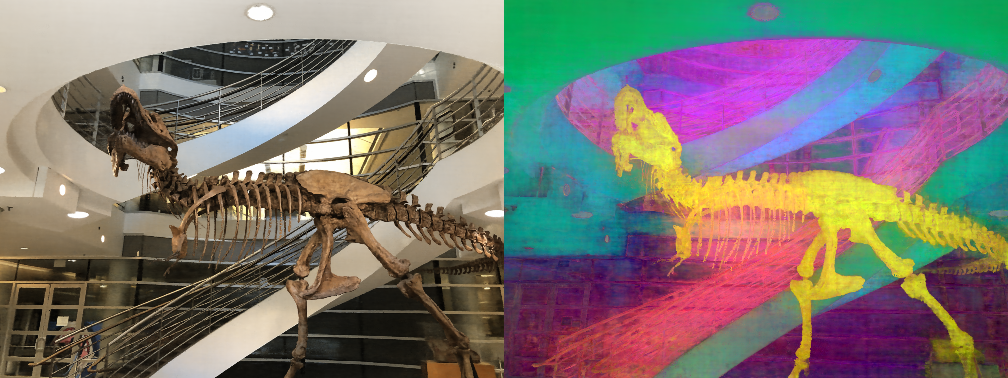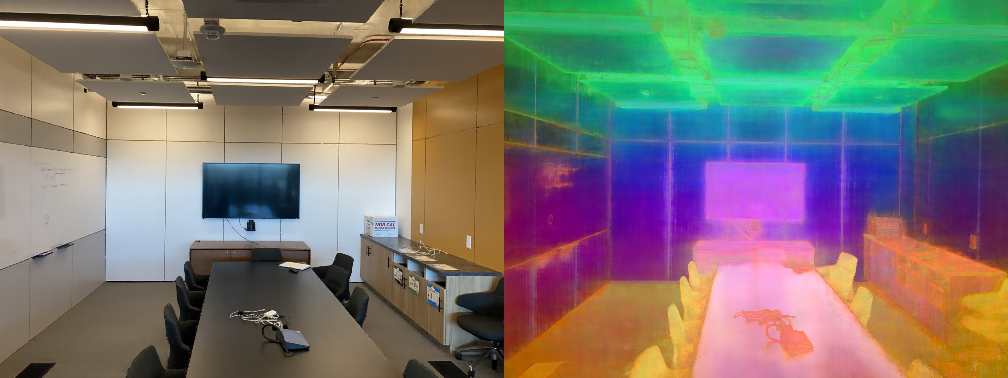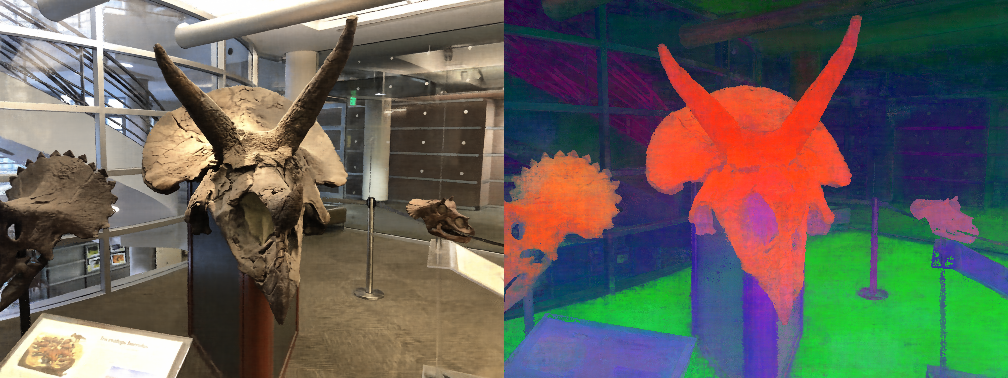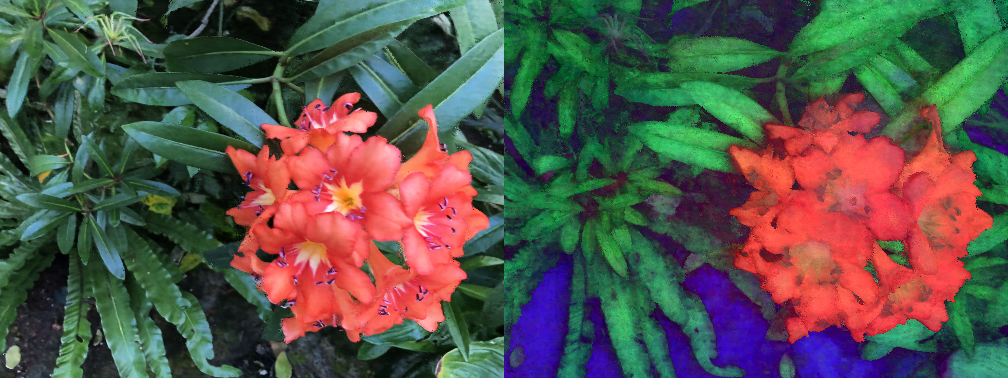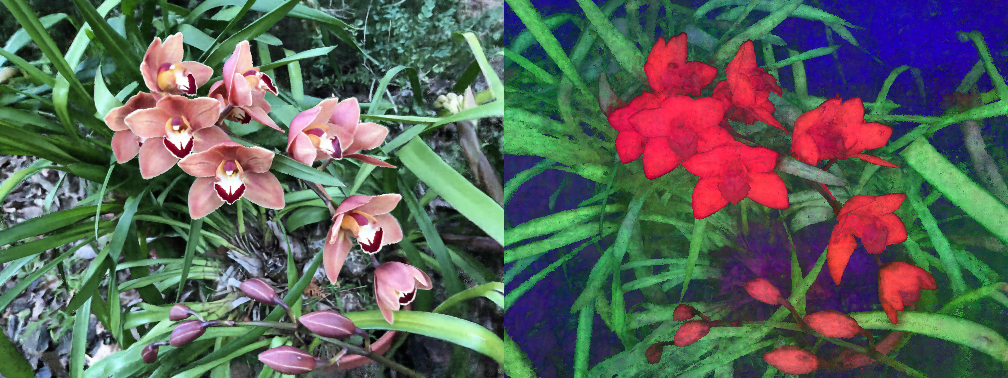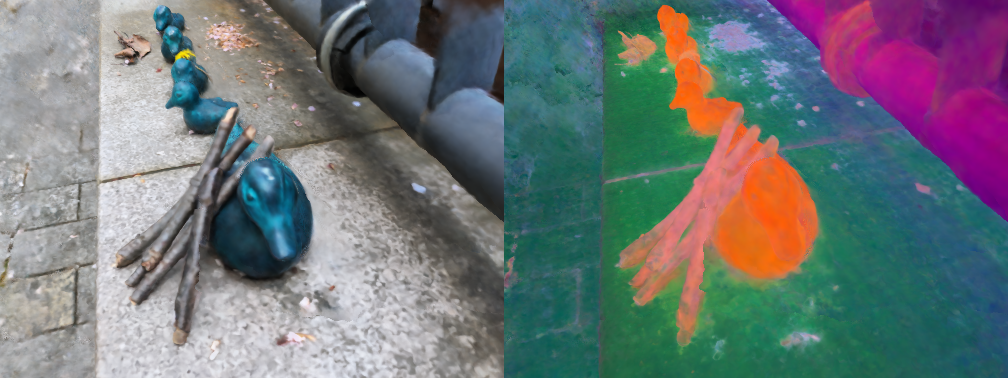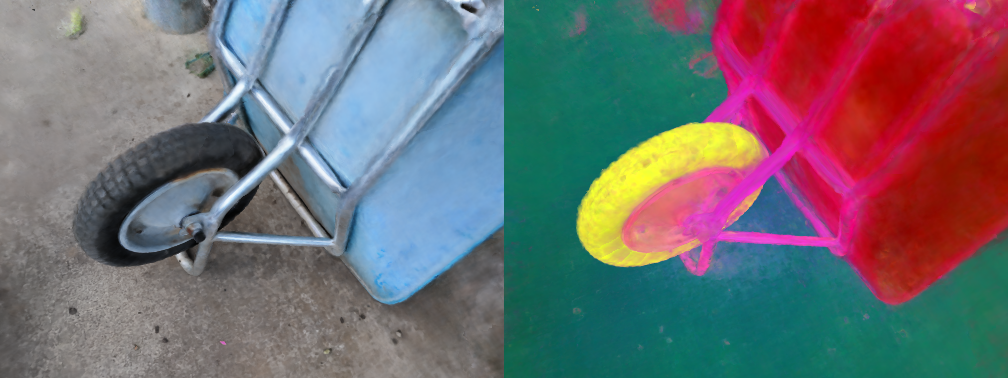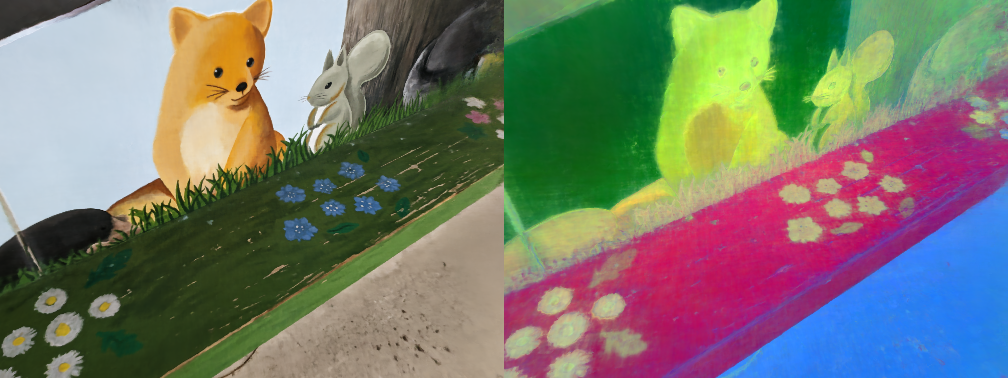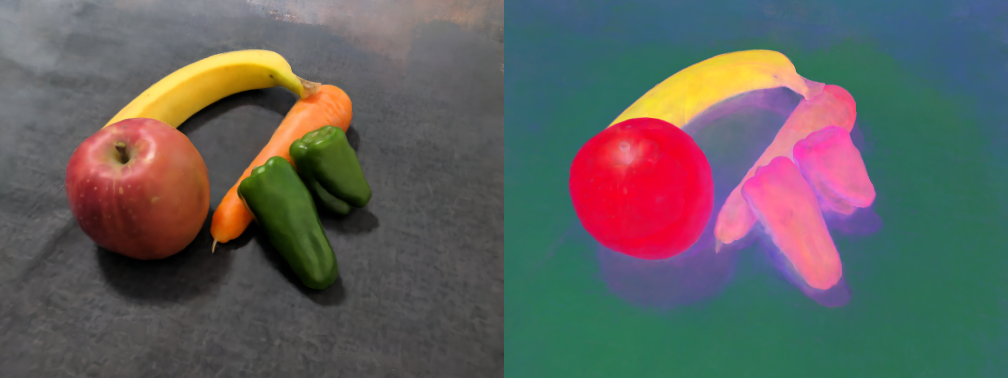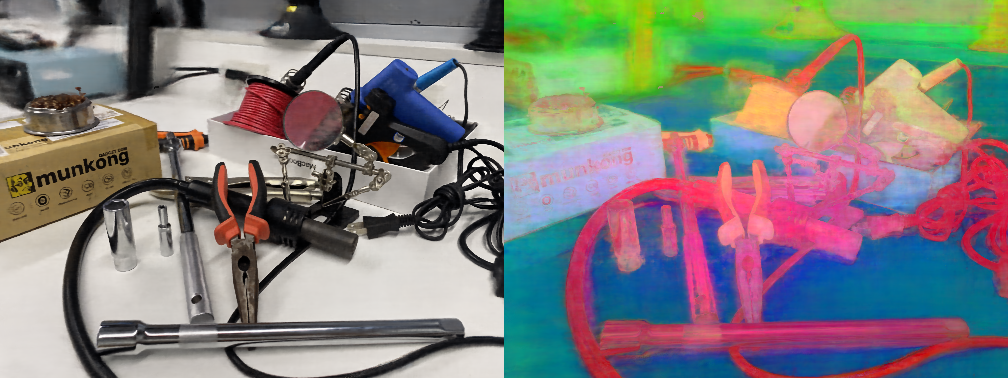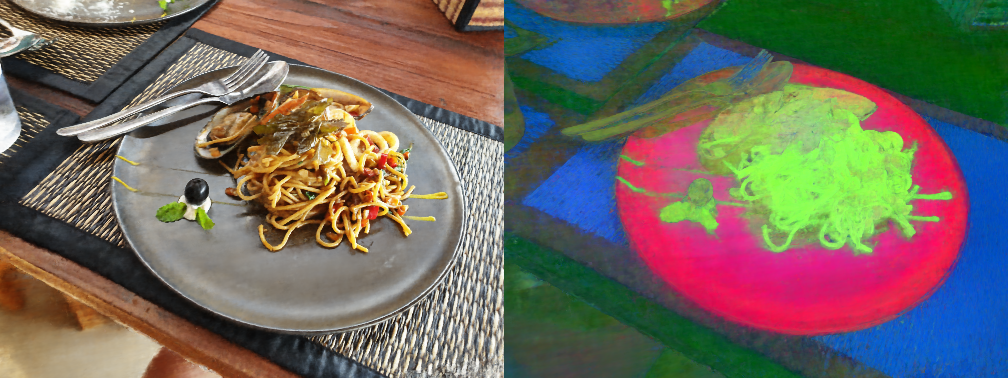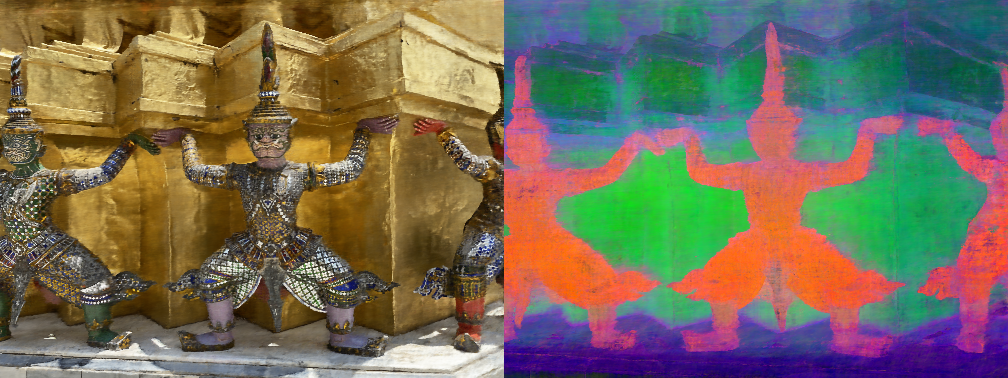Abstract
TL;DR Neural radiance fields can be edited via decomposition with arbitrary queries and feature fields distilled from pre-trained vision models.

Results
Our distilled feature fields (DFFs) are trained by distilling 2D vision encoders such as LSeg (CLIP-based zero-shot segmentation model) or DINO (self-supervised model with good performances in part correspondence tasks) without any 3D or 2D annotations. The learned feature fields can map every 3D coordinate to a semantic feature descriptor of that coordinate as well as radinace fields. We can segment the 3D space and the corresponding radiance fields by querying a feature vector and calculating scores via dot product.
Query-based Scene Decomposition
Distilled feature fields enable NeRF to decompose a specific object with a text query like "flower" or an image-patch query.
Raw rendering
Extraction
Deletion
Localizing CLIPNeRF via Scene Decomposition
CLIPNeRF optimizes a NeRF scene with a text prompt. However, naive CLIPNeRF poisons unintentional parts. We can combine our decomposition method with CLIPNeRF and selectively optimize the target object.
naive CLIPNeRF
+ Our method
white flower
white flower
yellow flower
sunflower
rainbow flower
petunia
Other Editings
We can edit decomposed objects of NeRF scenes in various ways, e.g., rotate, translate, scale, warp into another scene, colorize, or delete them.
move and deform apple
(LSeg field)
warp horns
(DINO field)
colorize
light
chair
television
floor
delete
(Note that the background behind the deleted objects can be noisy or have a hole because it lacks observation.)
light
chair
television
floor
LSeg Feature Field
We visualize a feature field distilled from LSeg as a techer network by PCA. The flower scene is from LLFF
Other DINO Feature Fields
We visualize feature fields distilled from DINO as a techer network by PCA. Scenes are from LLFF, shiny dataset, and our dataset.
